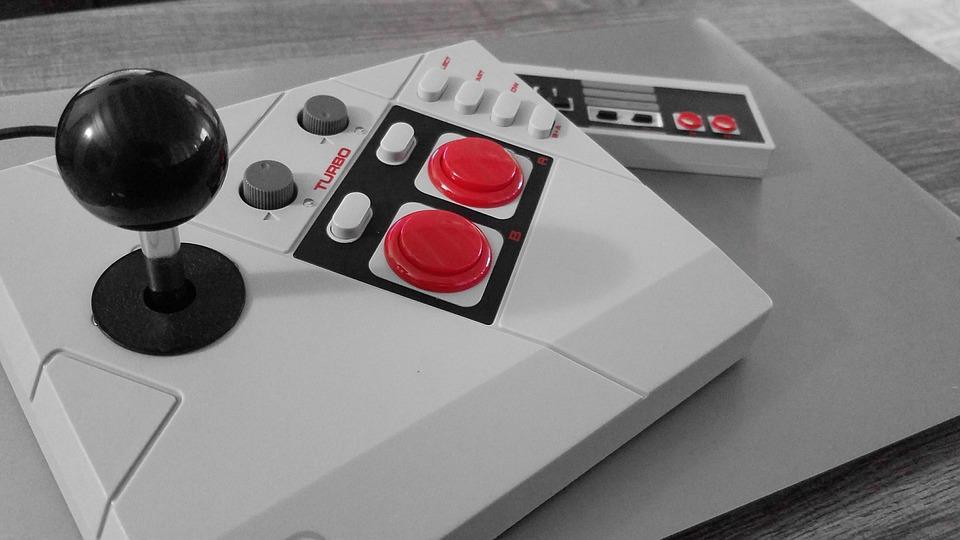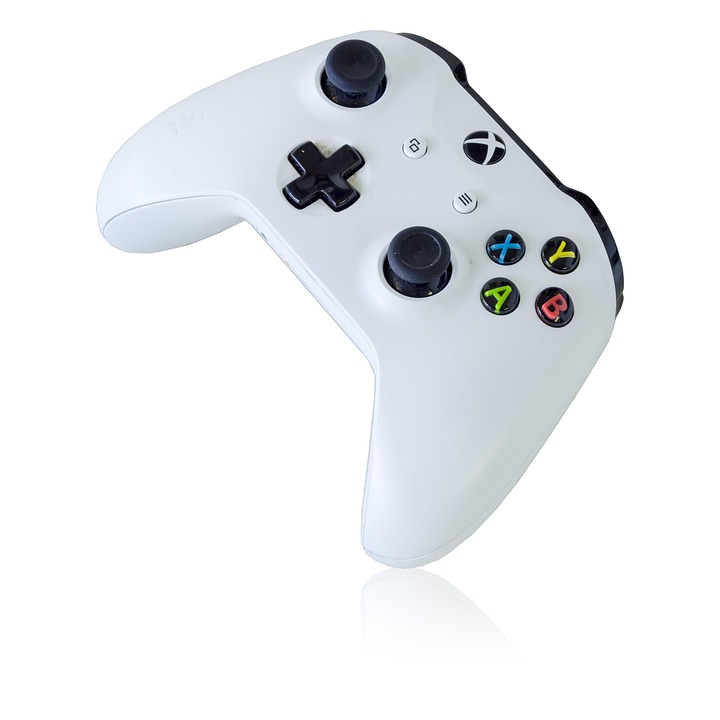10 Retro Consoles That Defined a Generation of Gamers – that phrase isn’t just a title; it’s a celebration. A celebration of the pixels, the adventures, the friendships, and the unforgettable moments that came from these beloved machines. If you’re here, it’s likely because you have a passion for gaming, nostalgia, or both. Let’s dive into the consoles that helped shape the gaming landscape as we know it.
Contents
- What Are Retro Consoles and Why Do They Matter?
- 1. Atari 2600: The Pioneer
- 2. Nintendo Entertainment System (NES): The Game Changer
- 3. Sega Genesis: The Cool Kid on the Block
- 4. Super Nintendo Entertainment System (SNES): The Sequel
- 5. Sony PlayStation: A New Era Begins
- 6. Nintendo 64: The 3D Revolution
- 7. Sega Dreamcast: Ahead of Its Time
- 8. PlayStation 2: The Best-Selling Console
- 9. Xbox: Microsoft Enters the Fray
- 10. Game Boy: The Handheld Revolution
- Why Retro Consoles Still Matter Today
- Final Thoughts
What Are Retro Consoles and Why Do They Matter?
Retro consoles are those classic gaming systems that many of us grew up with, often bringing a wave of nostalgia with each beep and boop. They matter because they laid the foundation for modern gaming. They introduced you to characters that became lifelong friends, worlds that sparked your imagination, and challenges that pushed you to think creatively.
These consoles not only defined a generation of gamers; they also shaped the very culture of gaming. They taught us about competition, cooperation, and the sheer joy of play. Let’s explore the ten retro consoles that played a pivotal role in this journey.
1. Atari 2600: The Pioneer
Atari 2600 is where it all began. Released in 1977, it was one of the first consoles to use interchangeable cartridges. Can you imagine your childhood without Pong or Space Invaders? This console opened the floodgates for home gaming.
- Key Features: Simple joystick controls, a library of over 500 games.
- Impact: Inspired future consoles and game developers.
Reflect on those late nights, huddled around the TV, shouting in excitement. The Atari 2600 brought families together and introduced the concept of multiplayer gaming.
2. Nintendo Entertainment System (NES): The Game Changer
When the NES hit the shelves in 1985, it revolutionized the gaming industry. With iconic titles like Super Mario Bros. and The Legend of Zelda, it became the must-have item for kids everywhere.
- Key Features: 8-bit graphics, a robust game library, and an innovative controller design.
- Impact: Established Nintendo as a household name.
Do you remember the thrill of jumping on that first Goomba? The NES not only defined a generation but also built a bridge to the future of gaming.
3. Sega Genesis: The Cool Kid on the Block
Enter the Sega Genesis in 1989, a console that appealed to older kids and teens. With titles like Sonic the Hedgehog and Mortal Kombat, it brought a new level of excitement.
- Key Features: 16-bit graphics, blast processing, and a diverse game library.
- Impact: Challenged Nintendo’s dominance.
The Genesis was not just about games; it was about attitude. It was the console that dared to be different, and it resonated with gamers looking for something fresh.
4. Super Nintendo Entertainment System (SNES): The Sequel
The Super Nintendo, released in 1990, built upon the success of its predecessor. With a refined library and improved graphics, it became a staple in gaming homes.
- Key Features: 16-bit graphics, Mode 7 graphics for 3D effects, and iconic titles like Final Fantasy VI.
- Impact: Set standards for RPGs and platformers.
As you ventured through Super Mario World, you experienced the magic of gaming storytelling. The SNES taught us that games could be more than just fun; they could evoke emotions.
5. Sony PlayStation: A New Era Begins
The Sony PlayStation arrived in 1994, marking a pivotal shift in gaming. With its CD-ROM technology, it offered larger games and stunning graphics.
- Key Features: 3D graphics, memory cards, and a vast library of genre-defining games.
- Impact: Popularized adult-themed video games and established Sony as a gaming powerhouse.
Remember the excitement of Final Fantasy VII? The PlayStation showed us that gaming could be an epic journey, complete with deep narratives and complex characters.
6. Nintendo 64: The 3D Revolution
Launched in 1996, the Nintendo 64 was a leap into the world of 3D gaming. With memorable titles like Super Mario 64 and The Legend of Zelda: Ocarina of Time, it captured hearts.
- Key Features: 64-bit graphics, four controller ports for multiplayer, and revolutionary 3D gameplay.
- Impact: Redefined platforming and adventure games.
The joy of roaming through the expansive world of Hyrule remains etched in our memories. The N64 taught us that exploration and creativity could flourish in gaming.
7. Sega Dreamcast: Ahead of Its Time
The Sega Dreamcast, released in 1999, may not have enjoyed commercial success, but it was a pioneer in many respects. It offered online gaming and a diverse library.
- Key Features: Built-in modem for online play, VMU (Visual Memory Unit), and a vibrant game lineup.
- Impact: Laid the groundwork for future consoles.
Though it faded quickly, the Dreamcast left a legacy. It showed that innovation could come from unexpected places, igniting a spark in gamers everywhere.
8. PlayStation 2: The Best-Selling Console
The PlayStation 2 released in 2000, became the best-selling console of all time, thanks to its extensive game library and DVD playback capabilities.
- Key Features: Backward compatibility, online gaming, and a massive library of games.
- Impact: Cemented Sony’s dominance in the gaming industry.
Can you recall the thrill of playing Grand Theft Auto: San Andreas? The PS2 proved that gaming could be a cultural phenomenon, shaping conversations and lifestyles.
9. Xbox: Microsoft Enters the Fray
Launched in 2001, the Xbox marked Microsoft’s entry into gaming. With its powerful hardware and online capabilities, it changed the landscape.
- Key Features: Built-in hard drive, Xbox Live, and games like Halo: Combat Evolved.
- Impact: Established a new standard for online multiplayer gaming.
The Xbox created communities and friendships that extended beyond the screen. It was about teamwork and strategy, drawing people together in a way only gaming could.
10. Game Boy: The Handheld Revolution
Finally, let’s not forget the Game Boy, that little device that fit snugly in your hands. Launched in 1989, it turned gaming into a portable experience.
- Key Features: Monochrome screen, long battery life, and a huge library of games.
- Impact: Made gaming accessible anywhere, anytime.
Whether you were playing Tetris on the bus or Pokémon during lunch, the Game Boy made every moment an adventure. It taught us that gaming could be a part of our daily lives, no matter where we were.
Why Retro Consoles Still Matter Today
These consoles aren’t just relics of the past; they’re a crucial part of gaming history. They shaped your childhood, influenced today’s gaming landscape, and created a community that spans generations. Understanding their significance can deepen your appreciation for the games you play now.
The Emotional Connection
The joy, frustration, and triumph you experienced while playing these consoles are ingrained in your memory. They remind you of simpler times, late-night gaming sessions, and the thrill of beating a tough boss.
The Influence on Modern Gaming
Modern consoles owe so much to these pioneers. The innovations in graphics, storytelling, and multiplayer experiences can be traced back to these machines. Each console built upon the successes and failures of its predecessors, paving the way for the gaming experiences you enjoy today.
The Community Aspect
The gaming community that formed around these consoles is still thriving. Online forums, social media groups, and retro gaming conventions provide spaces for fans to connect, share stories, and relive those cherished moments.
Final Thoughts
As we look back at the retro consoles that defined a generation of gamers, it’s clear that they’re more than just machines. They’re a part of your life, a part of your story.
Bottom Line
These consoles shaped not just the gaming industry but also your experiences and connections. Whether you’re a nostalgic gamer or a newcomer curious about gaming history, these ten retro consoles deserve your attention.
So, dust off those old cartridges, or maybe consider diving into the world of emulators. Relive those moments, share them with a friend, and keep the spirit of gaming alive.
FAQs
1. What is considered a retro console?
Retro consoles typically refer to gaming systems released in the ’70s, ’80s, and ’90s that have a significant cultural impact.
2. Why are retro games still popular?
Retro games tap into nostalgia, offer unique gameplay experiences, and are often simpler, making them accessible to new players.
3. Can I play retro games on modern consoles?
Many modern consoles offer backward compatibility or digital versions of classic games, making it easier to enjoy retro titles today.
Now, go forth and share your stories. What’s your favorite retro console memory?








